'Hey Joe' by Alice Twamley
1) Can you describe your creative process? How do you typically start and develop a new piece of artwork?
When I begin a painting, the first thing I do is choose a piece of music - something that I feel like listening to in that moment. Once the groove is going, it inspires me to start painting and I almost dance the paint onto the canvas. I work in layers, rarely using a paintbrush, scraping paint onto the canvas with layers of colour. I always let each layer dry, so that the paint doesn’t mix too much, because I love seeing the colours and combinations that are created with each layer. Then after lots of sitting back, evaluating, thinking and occasional frustration (if this happens I usually just switch up the music or go have a cup of tea!) I will choose sections from the lines and forms that I have created with the layers and bring certain areas to the forefront. Sometimes that’s a figure, a recogisable form or simply the abstract shapes I see and feel work well together. I keep working until I get the sense of completion or satisfaction that I am constantly searching for.
2) How did your fascination with music as an inspiration for your art begin? Can you pinpoint a particular moment that sparked that connection?
When I was in school doing GCSE Art, we studied a condition called Synaesthesia, which is a neurological phenomenon where the neurological pathways get confused in the brain, causing you to experience a mix up of the senses. Studying this really opened my eyes to abstraction because I find that music is often the most abstract art form, and no one ever questions it. People often want an explanation to abstraction but sometimes there simply isn’t. This allowed me to really explore the potential that music has to inspire art, because it allows me to create art through instinctive chance, finding forms through process. For me, planning a piece or drawing before a painting never helps me create a successful piece, it is all in the moment.
3) How does the rhythm, tempo, or lyrics of a song affect the color palette, composition, or mood of your artwork?
Everything in a piece of music creates an overall mood for me and that mood will be the mood that I then feel. I love painting bright and colourful pieces, so I always go with happy, vibrant and upbeat songs. I love any music with brass, especially saxophone and I love anything funk, soul or disco. I am a very sensitive and emotional person so if I play a sad song, my mind takes me somewhere sad and I usually would just overthink that and end up crying about something! I do allow myself to feel those feelings, but I prefer my artwork to come from a place of uplift and positivity. Life can be so hard, so I want people to experience some goodness and happiness when they see my work.
4) Do you have a preferred genre or style of music that serves as a consistent muse for your art, or do you draw inspiration from a wide range of musical genres?
I love all kinds of music but funk and disco will always have my heart as it makes me want to dance. I also love jazz music as sometimes I find the more complex a song is, the more there is to explore, to find out and also experience, which furthers my art.
5) Can you discuss any challenges or unique experiences you encounter when bridging the gap between music and visual art in your work?
Sometimes a painting just isn’t working. It’s like solving a puzzle and sometimes I get stuck and that could lead to frustration, so I would leave it for days, even weeks or months before I come back to it. Its easy to begin to see the frustration in a piece of work. I was once doing a commission for someone when I was living at home, just at the end of COVID and my stepdad had just had a cardiac arrest and so was in hospital, unresponsive and we didn’t know if he was going to make it. I sent a photo of the piece to the client that I was doing the commission for and they said that they could feel the distress in the piece. This just broke my heart because it was something I hadn’t realised as I thought it was a finished piece. It really was a wakeup call that sometimes you need to stop and slow down and resolve some things, even if you put on a brave face and tell yourself you are ok. Sometimes you do need to step back and focus on yourself before you can come back to a piece. For me, I have to be in the right mind set and so that can mean that sometimes I don’t paint for weeks or months at a time and that’s OK.
6) How do you choose the specific medium or technique for your art that best conveys the music’s influence and your creative vision?
I have always used acrylic paint in my work because of its drying time. For me, music has so many layers and so acrylic allows me to create those important layers as it takes minutes to dry, rather than oil which can take days. I have done a few oil paintings and I find it really changes my style of painting which is fun to explore sometimes too. Scraping tools also produce thin layers of paint, enabling me to create more translucent layers of paint and therefore layer more colours onto each other. I sometimes find that I finish a piece and I haven’t actually used a paintbrush at all.


